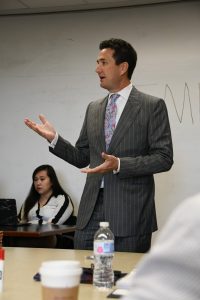Louisiana Court Rules in Favor of Bayou Bridge Pipeline
On December 6, the 16th Judicial District Court in St. Mary Parish Louisiana ruled in favor of the Bayou Bridge pipeline, issuing a mere $450 punishment for trespassing in an eminent domain suit filed by three local residents. The lawsuit, filed in late July of 2018, argued that Energy Transfer, LP (formerly Energy Transfer Partners), the owner of the pipeline, illegally began construction on privately owned land without proper permission.
The Bayou Bridge pipeline is a 163-mile underground oil pipeline intended to transport oil from the Louisiana-Texas border to St. James Parish. Many residents do not mind their land being used to house the pipeline, but many other residents are very opposed to the idea, claiming that the land being used is “not valueless, vacant land…. The property is part of a larger vital and vibrant ecosystem filled with life that includes trees, wildlife, fish, and birds, and it plays an important role in the economic health and well-being of the state beyond its borders.” Thus, for the landowners who filed the suit, the challenge is not about money, but it is rather about protecting the land.
The defense claimed that they had eminent domain over the land, allowing them to take it through expropriation due to the fact that the land was used for the public’s interest. The Court agreed, allowing them to continue the pipelines construction, but assessed a small penalty for trespassing—150 dollars to each plaintiff—given that they did not exercise due diligence in notifying the property owners prior to the beginning of construction. The plaintiffs continue to hold that it is not in the public’s interest to facilitate coastal erosion, the natural consequence of digging, carving, and drilling into Louisiana’s marshland. Additionally, the plaintiffs argue, the pipeline places the utilized land at risk of an oil catastrophe, citing Energy Transfer’s history of 3.6 million gallons of oil spilled in the last sixteen years.
 Louisiana Lawyer Blog
Louisiana Lawyer Blog



